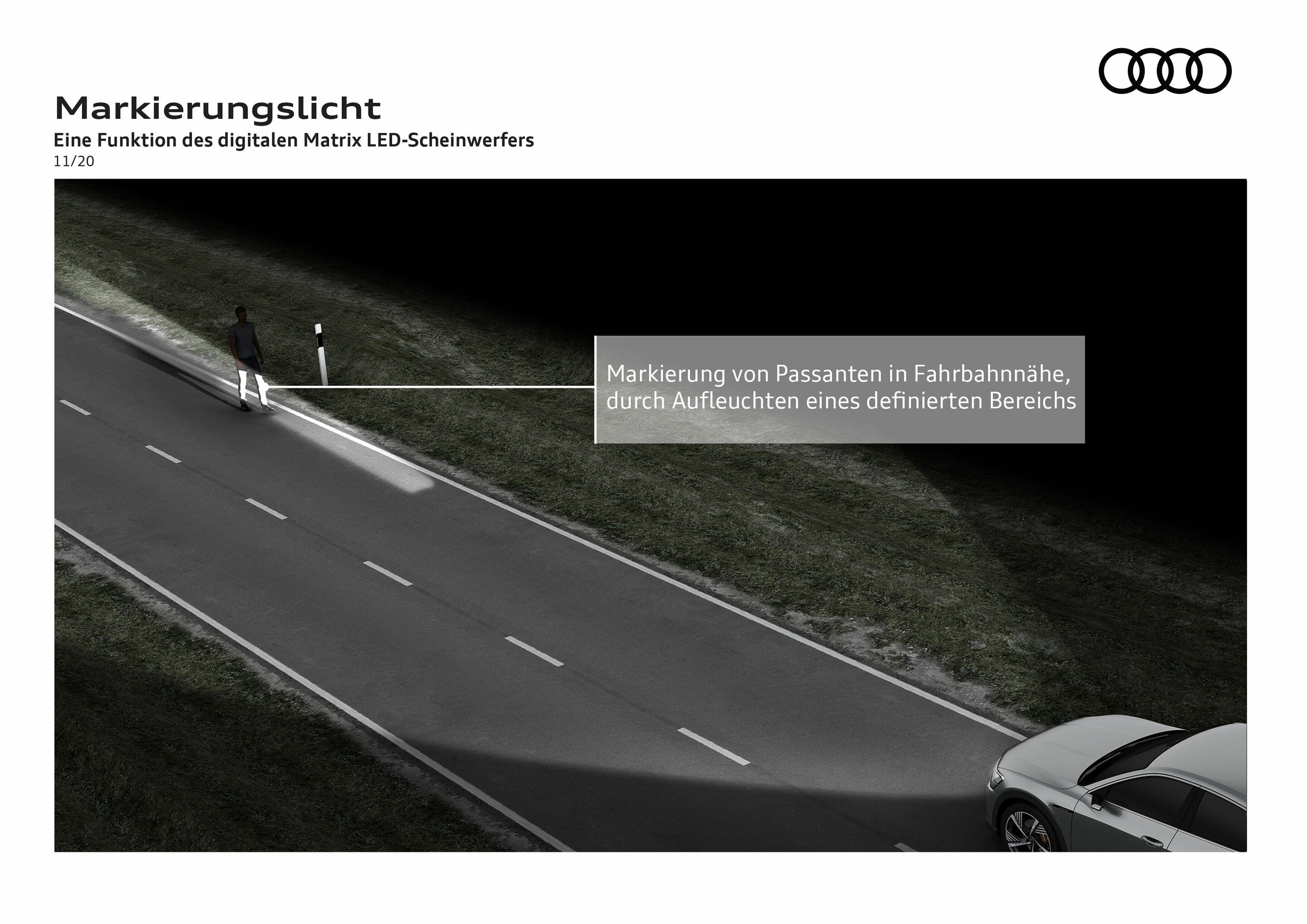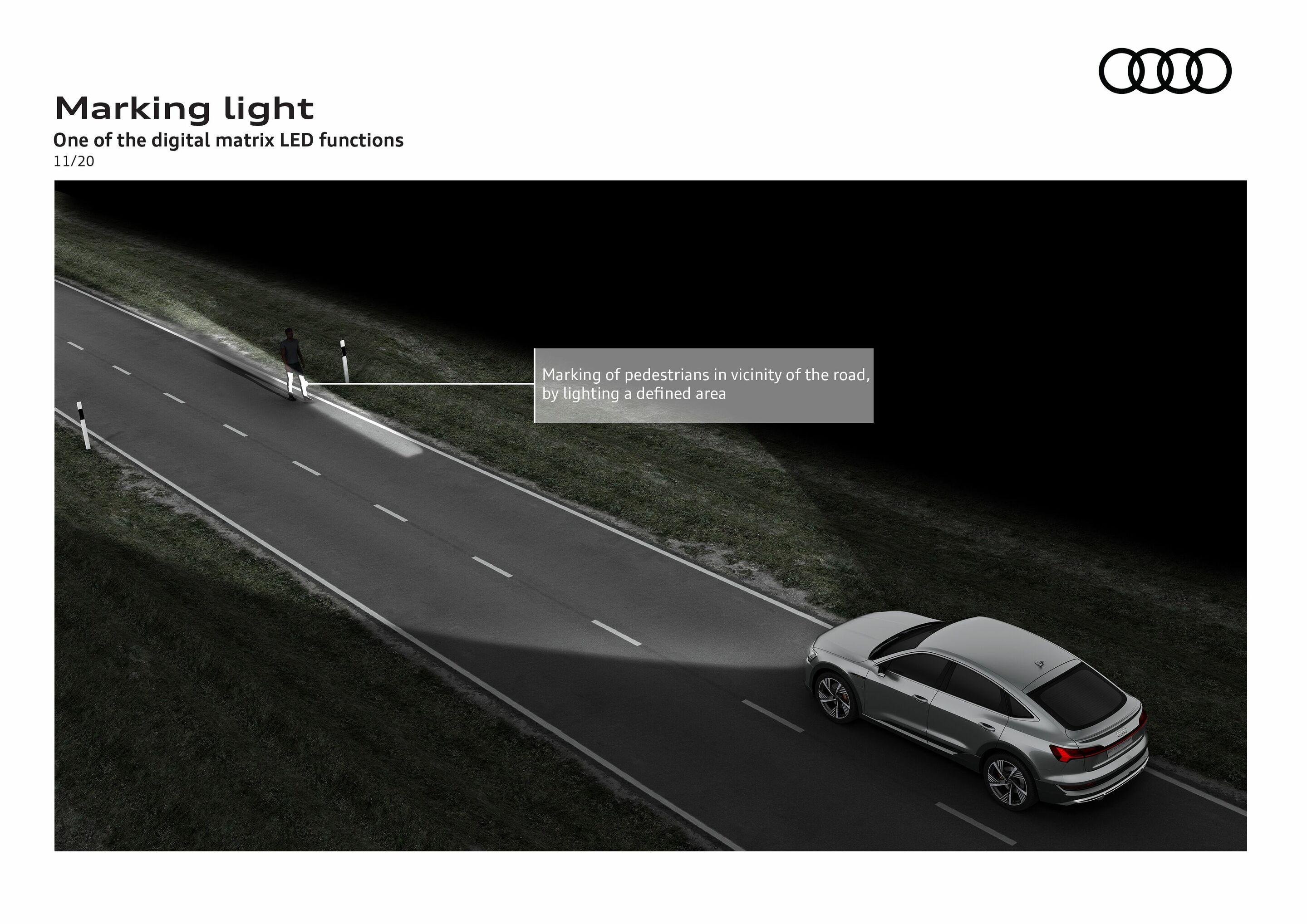Search
All search results for "marking light "
(180)
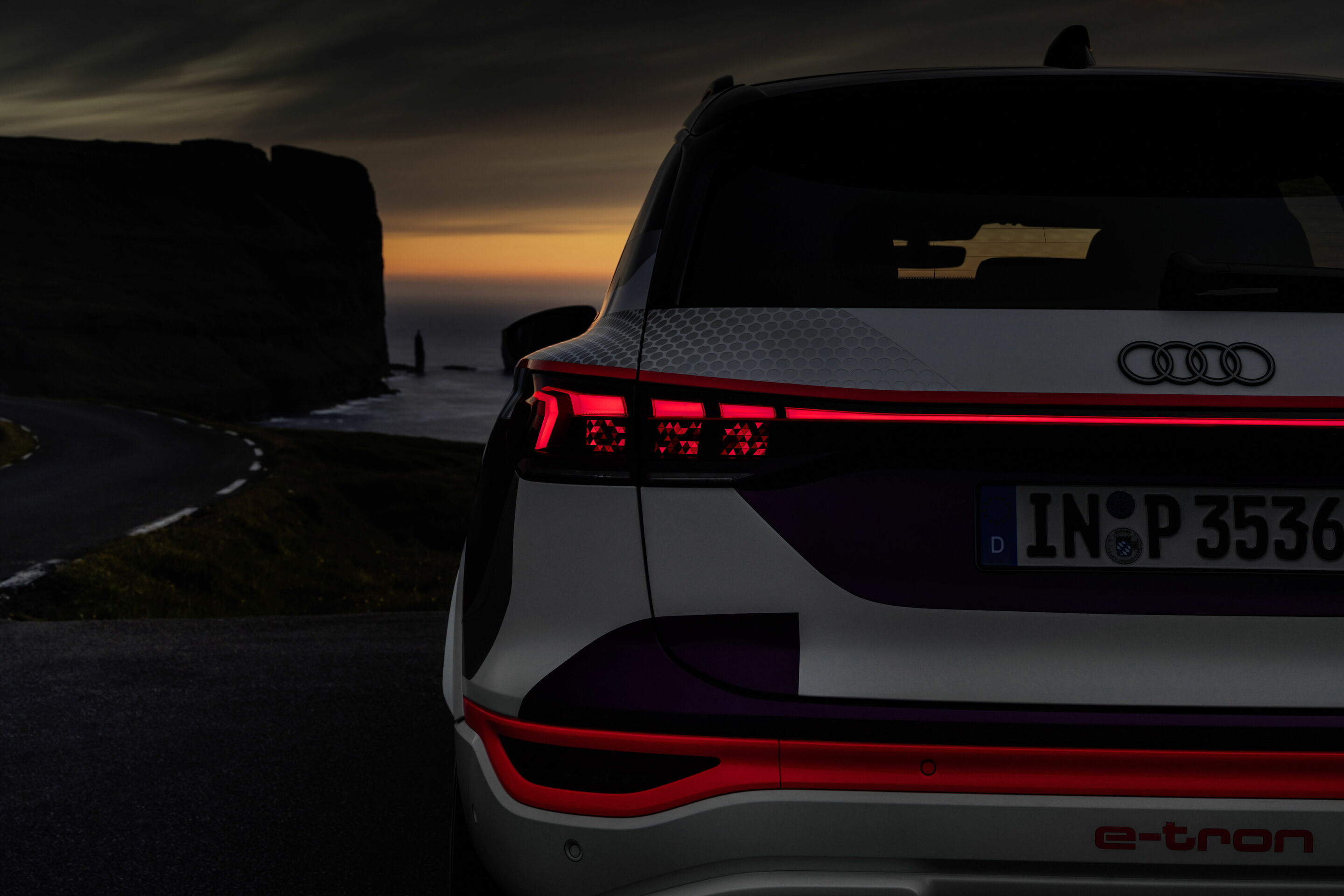 Lighting
Lighting
Depending on its position, the LED light is either directed through lenses onto the road or absorbed to create masked areas. This divides the light into tiny pixels. This technology forms the basis for a wide range of functions, such as the lane light, orientation light, and enhanced traffic information. These innovations support and improve road safety. On highways and country roads, the lane light creates a carpet of light that brightly illuminates the driver’s lane and dynamically adjusts during lane changes. This increases the driver’s focus on the relevant lane and contributes to overall traffic safety. The orientation light uses dark, light-excluded gradients to proactively indicate the vehicle’s position within the lane, supporting the lane centering assistant – especially useful on narrow roads and in construction zones. The marking light is also used in conjunction with the optional night vision assistant. If the system detects pedestrians, the light highlights them, reducing the risk of overlooking people near the roadway. Additionally, the digital matrix LED headlights can generate dynamic coming/leaving home lighting scenarios, which appear as projections on a wall or on the ground. This turns the space in front of the vehicle into a purposefully illuminated stage. When the turn signal is activated, the headlights create a dynamic flashing zone on the corresponding side of the lane light — specifically, the lane light with turn signal indication. The lane light thus reinforces the turn signal by projecting it onto the road ahead. This also provides a clear visual cue to surrounding traffic about the intended lane change. With this feature, Audi increases safety for all road users, especially in heavy traffic.
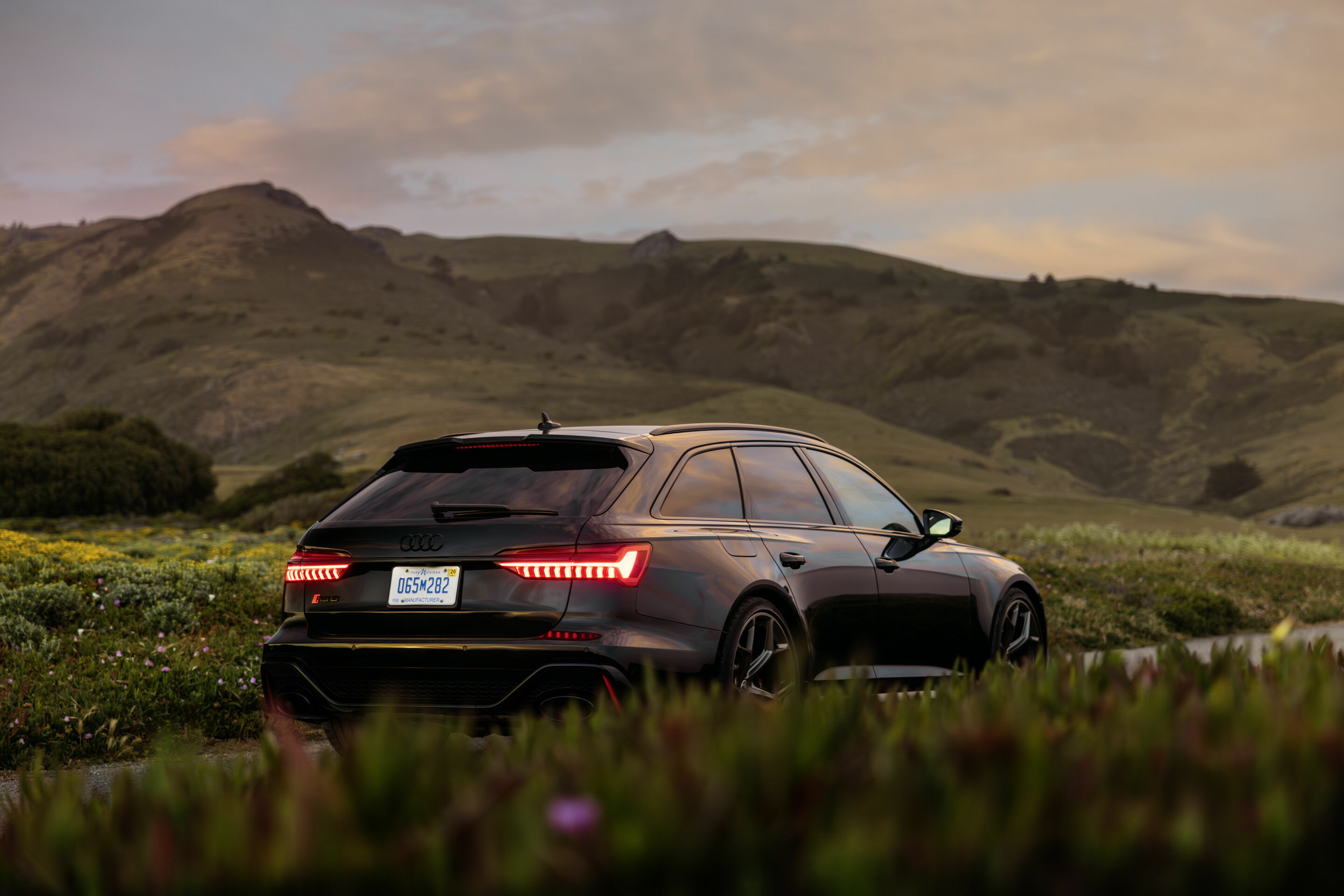
The daytime running light signature has a digital character: Twelve light segments are positioned vertically next to each other here, separated by narrow spaces – like the 0 and 1 of the digital world. The turn signals and the two-line Matrix high beam, which is made up of 32 individually controllable LEDs, are located in the lower section of the lighting unit. They illuminate the road dynamically and precisely while hiding other road users from the cone of light automatically. The LEDs also act as cornering lights. The taillights of the high-performance Avant also conjure up associations with the digital world. Each unit comprises nine vertical segments that alternate with the brake lights, which are also segmented. Both the optional Matrix LED headlights with Audi laser light and darkened bezels and the LED rear lights are equipped with dynamic turn signal lights and run through RS-specific sequences when the vehicle is locked and unlocked. The Audi laser light, recognizable by the blue marker in the reflector, doubles the range of the high beams. In each headlight, a small laser module generates a light cone that acts as a spotlight extending several hundred meters. The monochromatic and coherent blue laser beam has a wavelength of 450 nanometers. A phosphor converter converts it into soft light suitable for roadway use with a color temperature of 5,500 kelvin, ideal for the human eye. This enables the driver to recognize contrasts more effectively and helps to prevent fatigue. The laser spotlight, which is activated at speeds of more than 70 km/h (43.5 mph), offers tremendous advantages in terms of visibility and safety. If the camera on the windshield detects other vehicles within range, the laser spotlight is automatically dimmed. All terms marked in the text are explained in detail in the technology lexicon at www.audi-mediacenter.com/en/technology-lexicon. The equipment, data and prices specified in this document refer to the model range offered in Germany.

The daytime running light signature consists of twelve light segments that are positioned vertically next to each other, separated by narrow spaces – conjuring up an association with the ones and zeroes of the digital world. In the lower zone are the turn signals and the two-line Matrix high beam, which is made up of 32 individually controllable LEDs. They illuminate the road dynamically and precisely while leaving other road users out of the cone of their light. The LEDs also act as cornering lights. The tinted HD matrix LED headlights with Audi laser light and the LED rear lights are equipped with dynamic turn signal lights and run through RS-specific sequences when the vehicle is locked and unlocked. The Audi laser light, recognizable by the blue marker in the reflector, doubles the range of the high-beams. In each headlight, a small laser module generates a light cone that acts as a spotlight extending several hundred meters. The monochromatic and coherent blue laser beam has a wavelength of 450 nanometers. A phosphor converter converts it into soft light suitable for roadway use with a color temperature of 5,500 kelvin, ideal for the human eye. This enables the driver to recognize contrasts more effectively and helps to prevent fatigue. The laser spotlight, which is activated at speeds of more than 70 km/h (43.5 mph), offers tremendous advantages in terms of visibility and safety. If the camera on the windshield detects other vehicles within range, the laser spotlight is dimmed automatically. The rear lights on the large grand tourer also appear digital. Each unit comprises 13 vertical segments that alternate with the brake light, which is also segmented. The LED light strip – an homage to the Sport quattro – interconnects the lighting units. The rear fog light is positioned in the center, as on a racing car. All terms marked in the text are explained in detail in the technology lexicon at www.audi-mediacenter.com/en/technology-lexicon.

World premiere: The active digital light signature sets headlights and rear lights in motion in an unprecedented way For the first time, customers can select digital light signatures for the headlights and rear lights via the MMI and the myAudi app Package with digital light signatures available on demand
This innovation will permanently change automotive light design and car-to-X communication: With second-generation digital OLED rear lights, the Audi Q6 e-tron is taking light design, range of functions, and road safety to a new level. Audi is gradually developing the technology into intelligent displays that can communicate with other road users by displaying information via the exterior lights – this is the new communication light. The active digital light signature is another world first making its debut in the Audi Q6 e-tron. It makes an entirely new and vibrant impression, pointing the way to the future of Audi lighting technology. For the first time, customers can optionally select digital light signatures for this new evolution of digital daytime running lights in the Matrix LED headlights and the new generation of digital OLED rear lights. In addition, customers may book digital light signatures on demand.
The Q6 e-tron not only marks a new chapter in electromobility at Audi; lighting technology is an important part of Audi’s DNA. With the world’s first active digital light signature, the Audi Q6 e-tron ushers in a new era characterized by distinctive design and aesthetics unique to Audi. The second-generation of digital OLED technology shapes the look of new Audi models and increases their range of functions many times over. This, in turn, improves road safety, as impressively demonstrated by the communication light in the digital OLED rear lights.
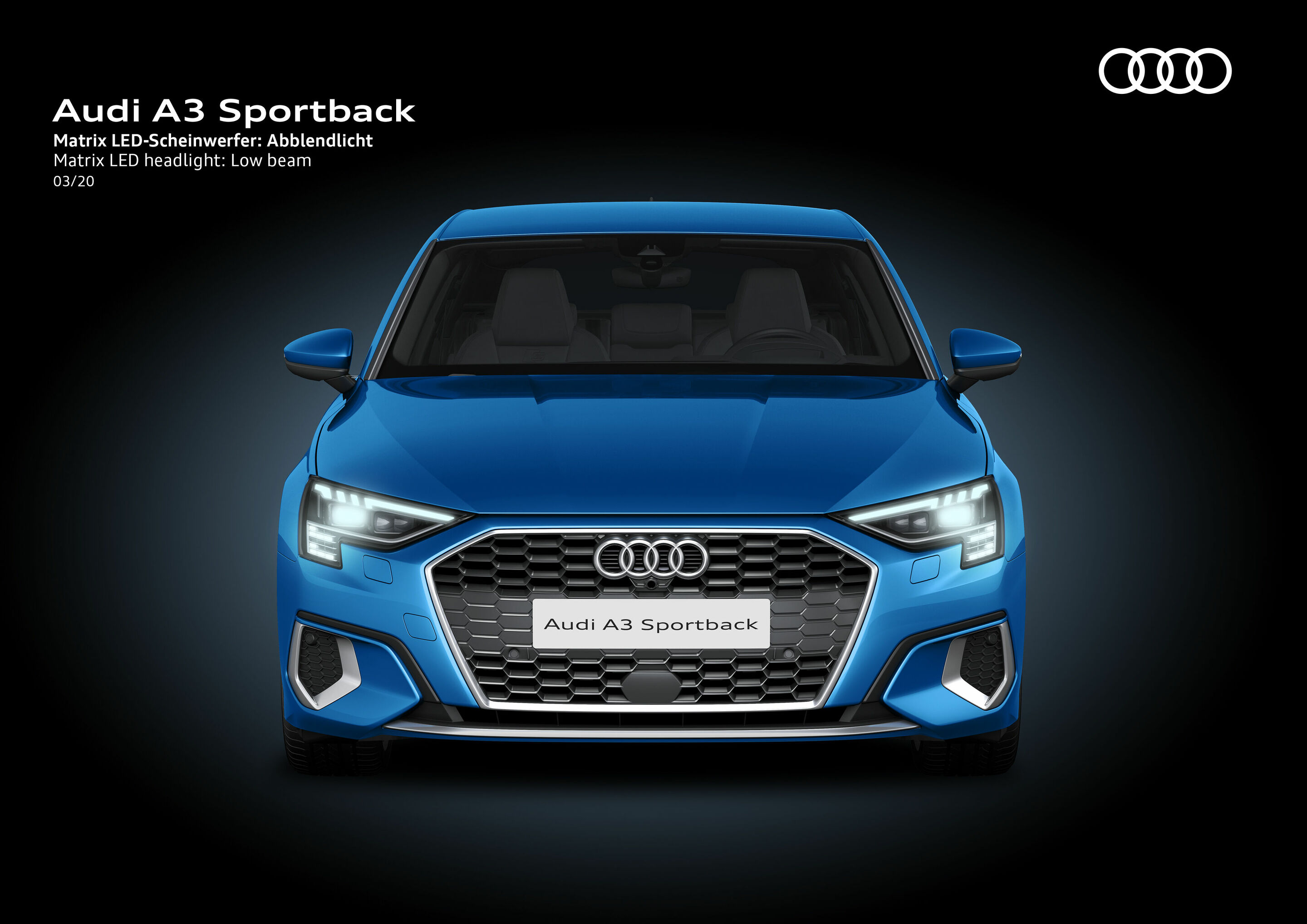
The shoulder line runs in a wedge shape from the headlights to the rear lights, making the A3 Sportback appear longer. The surface below it falls inward, accentuating the quattro blisters and highlighting the body shoulder. With its concave side, the A3 Sportback is showcasing a completely new element of the Audi design. This creates an intensive play of light and shadow, which is mainly due to the strong contour in the sill area. The lower body line is drawn upward again before it reaches the rear wheel arch. This makes it appear particularly dynamic. The heavily inclined C-pillars also give the compact five-door car a forward thrust. They are virtually squatting on the rear wheels. A long roof edge spoiler provides shade for the rear window, making it appear particularly flat – this effect makes the rear end with its three-dimensional design appear extremely wide. This impression is reinforced by the circumferential shoulder line, the wedge-shaped rear lights, the implied air outlets at the wheel arches, the diffuser insert, and the trapezoidal tailpipe trims. Signed: digital daytime running lights The headlights are available in three versions. Even the basic version uses almost all LED technology. Their flat, wedge-like shape underlines the sporty character of the new Audi A3 Sportback. Trapezoidal angles at their outside corners are drawn downward. The matrix LED headlights, the top-of-the-line version in the range, integrate a lighting innovation from Audi in these angles: digital daytime running lights. Their matrix of LED elements in a three-by-five arrangement can be actuated variably, which means that the different versions of the new A3 Sportback each have specific signatures. While horizontal lines are characteristic of the basic model, two vertical LED lines emphasize the sportiness of the S line exterior.
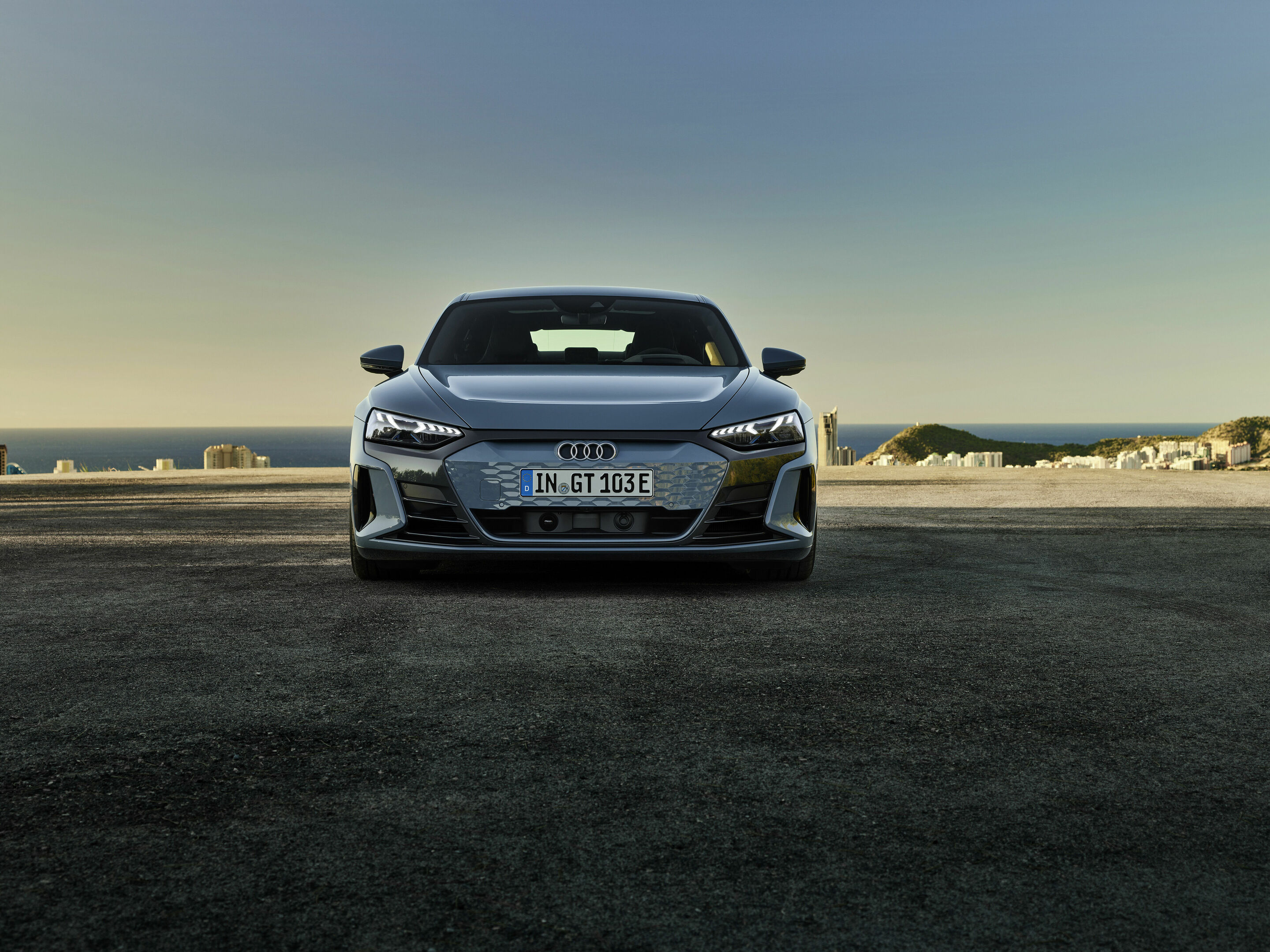
The headlights and rear lights are characteristic elements of the exterior design of the e-tron GT quattro. This is where the character of the electrically powered gran turismo is focused. They are three-dimensional sculptures with a dynamic character and digital aesthetics. The wedge-shaped headlights in the e-tron GT are available in three versions. Audi supplies them in LED technology with dynamic turn signals as standard. The matrix LED headlights are also available as an alternative; these come as standard with the RS e-tron GT. Their continuous high beams can shine with maximum brightness without blinding other road users. Topping the range are the matrix LED headlights with Audi laser light. In the center of the headlights, between the low beam and high beam modules, there is a laser spot that is activated from a speed of 70 km/h (43.5 mph) and doubles the range of the high beam. It is framed by an X-shaped trim with expressive design that is a small work of art in itself. Its lower section consists of free-standing elements with edges illuminated in blue. The central wings of the daytime running light signature forms the upper part of the “X.”
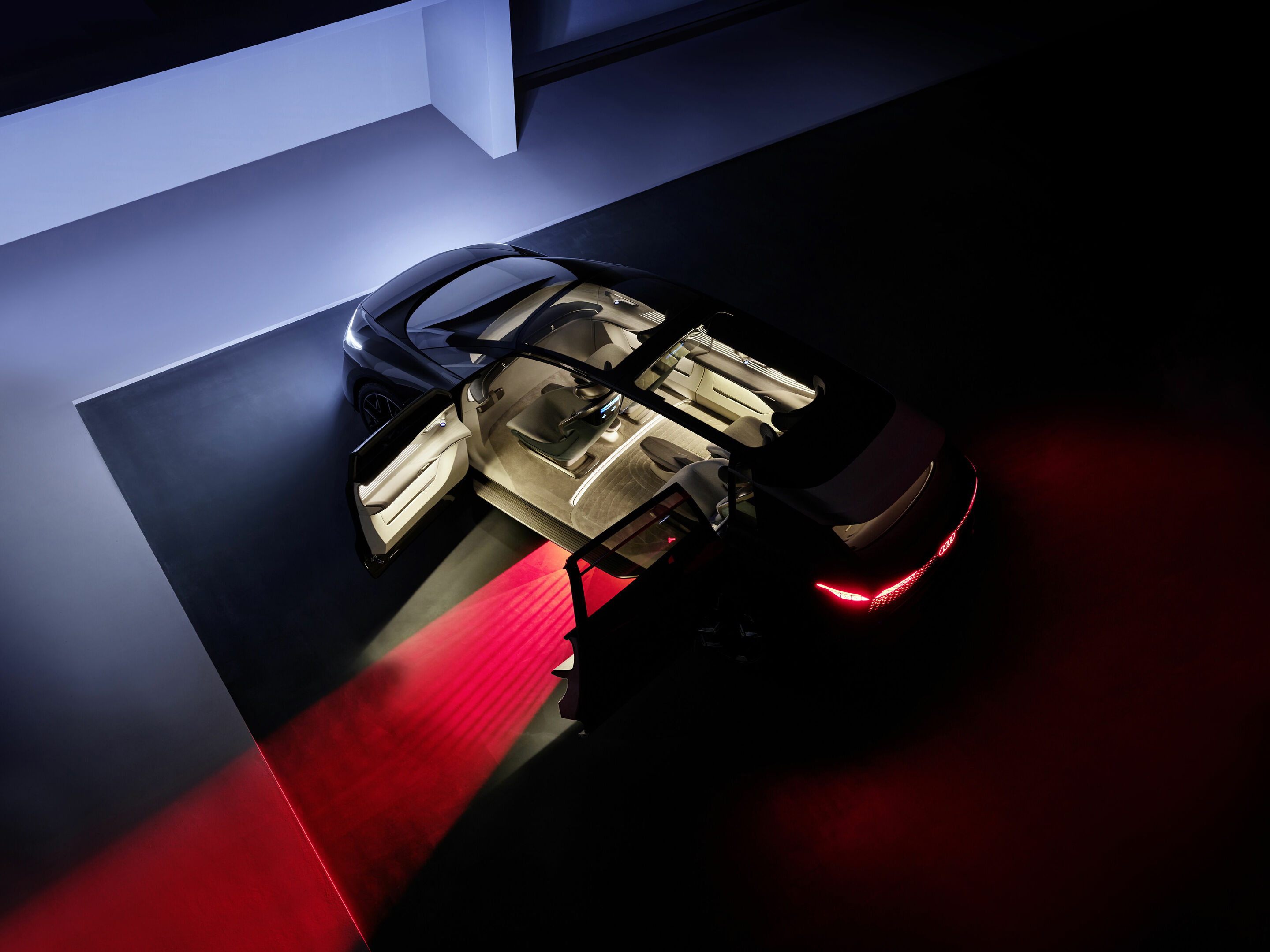 How Audi’s light digitization is pointing the way toward the future
How Audi’s light digitization is pointing the way toward the future
New number one and number two functions in the Digital Matrix LED: the orientation light on country roads and the lane light with direction indicator lights
We’ve all been there: it’s dark and there is a lot happening on the highway at night. The lane light with the orientation light is extremely helpful in a situation like that. It illuminates the car’s own lane, helping the driver focus on driving events. The integrated position marking from the orientation light – darkened arrows in a kind of “carpet of light” known as the lane light – predictively indicates the Audi vehicle’s position between the lane markers, encouraging safe driving in the center of the lane. With its focus on the car’s own lane markers, the lane light with the orientation light on the highway helps, for example, in narrow lanes around construction sites: the illumination is deliberately restricted to the car’s lane and not the lanes of the construction site in order to optimally center the driver’s focus on the road. Now that the headlight has been digitized, this orientation light is also available independently of the lane light on country roads, which is a new feature. That is the first new function that is made possible in additional driving situations due to digital light technology.
Back to the highway: during lane changes, the lane light brightly illuminates both lane markers, while the orientation light indicates the car’s exact position in the lane to give the driver the most support. That is where the second new function comes into play: the direction indicator lights in the lane light. With the blinkers activated, the Digital Matrix LED headlights create a dynamic blinking area on the appropriate side of the lane light. That way, the lane light reiterates and intensifies the signal from the direction indicator lights on the road in front. This means that additional, clear information about the upcoming lane change goes out to traffic in the immediate vicinity.
 Compact class meets Celtic charm: the new Audi Q3 in Scotland
Compact class meets Celtic charm: the new Audi Q3 in Scotland
With intelligent driver assistance systems, lighting technology from the full-size class, and a striking design, the Q3 brings premium standards to the road. A journey through the breathtaking beauty of Scotland reveals just how much character it truly holds.
Scotland, Glasgow. Where the River Kelvin flows into the mighty Clyde, stands the Riverside Museum – an architectural masterpiece that combines movement and history. This is the spot where our road trip begins with a special companion: the new Audi Q3. Its design? Expressive, dynamic, and emotional, with an exciting interplay of sweeping curves and precise lines. From the Riverside Museum, we start our drive into the Scottish Highlands. But first we have to navigate the quirks of a big city that has not always adapted to the demands of modern traffic. In the process, we get to know the new Audi Q3 in all its facets – and how it can support us while driving. Digital companion for every day We get settled into the sporty, elegant seats and immerse ourselves in Glasgow’s urban flair. After just a few minutes, it becomes clear that the new Audi Q3 is much more than a means of transportation – it is a digital companion for everyday life. During a stop in the historic city center, whose roots date back to the 6th century, the park assist plus shows what it can do. It maneuvers the vehicle into even the tightest of spaces with impressive precision. Supported by several ultrasonic sensors and high-resolution cameras, the system recognizes its surroundings in real time and provides clear visual and acoustic feedback – a real advantage when parking in the narrow streets of Scotland’s largest city. Back on the road, the traffic sign recognition system helps the driver keep an overview of things. For example, speed limits and construction zones are reliably detected and projected directly onto the head-up display – this is particularly helpful for those unfamiliar with the area while driving in dense city traffic.


